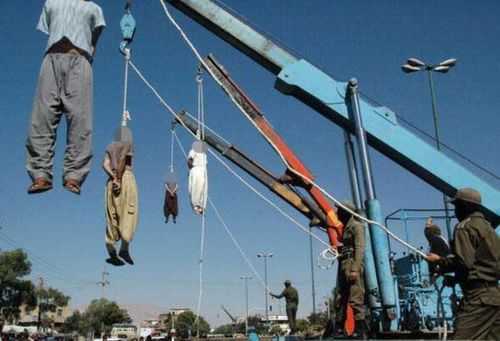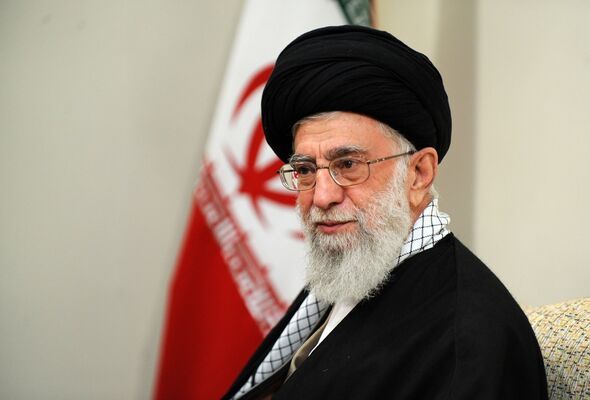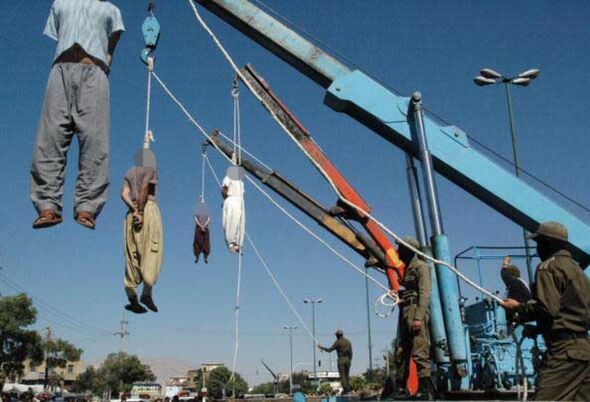

IRAN'S tyrannical regime is so concerned about renewed protests that it holding fewer public executions to limit the number of mass gatherings, experts suggested last night.
It follows news that supreme leader Ayatollah Ali Khamenei oversaw a record 1,000 executions over the past 12 months - including dozens of women and children - as he strives to tighten his grip on political activism and public dissent.
Only four were held in public, however, in sharp contrast to the 53 public hangings carried out in 2015.
"This reflects a cautiousness on the part of the Iranian government, particularly when it comes to conducting what is a record number of executions within a given period,' said regional expert Megan Sutcliffe, from Sibylline strategic risk group.
"The Iranian regime doesn't want to provide a gathering point or a flashpoint for protests to emerge."
Some 993 prisoners were executed in 2024, a 16 per cent increase from the 864 executions carried out in 2023.
More than half were executed on drug-related charges, despite the regime's Islamic Revolutionary Guard Corps (IRGC) and its networks controlling major drug trafficking operations worth billions of dollars across the region and globally
Also hanged were 32 women - compared with 16 in 2021. Most had faced murder charges, with a significant number of the women victims of domestic violence, child marriage or forced marriage.
One of the women executed for murder had killed her husband to prevent him from raping her daughter, according to the UN.
it is no coincidence that almost half of the hangings were carried out in the final quarter of last year, a period during which the regime faced mounting economic turmoil, regional defeats, and escalating public discontent.
"This number of executions is the highest in the past three decades when it comes to this regime, and if anything, it reflects the desperation Khamenei faces in dealing with a multitude of crises-domestically, internationally, and regionally-with serious setbacks in Lebanon, Syria, and elsewhere," said Ali Safavi,of the Natioal Council of Resistane of Iran (NCRI) opposition group.
Last week, large sections of Tehran's bazaar went on strike in protest against crippling price hikes and skyrocketing currency rates. Protesters chanted: "Courageous merchants, support, support!" "Shut it down, shut it down!" and "You can't do business with an 800,000 rial dollar!"

While the shocking number of death sentences is calculated to instil fear into Iran's mostly young population, the regime is so brittle that only 78 executions were officially announced before they were carried out, and only four took place in public.
This means 92 per cent of all executions were held in private, and only reported after the event.
The gruesome spectre of public executions is a common feature in Iran, and is usually carried by lifting prisoners off the ground by crane, leading to a slower death by strangulation.
Their number had been steadily increasing since 2010, reaching an annual average of 50 to 60 between 2011 and 2015, according to the Iran Human Rights campaign group.
They dropped slightly when Iran signed the now defunct JCPOA nuclear deal with the US, UK, Germany and France, and dropped significantly during the Covid Pandemic.
But a wave of protests caused by the death in custody of Mahsa Amini, arrested for improperly wearing her head scarf, and mounting discount over the state of Iran's fragile economy, has left the regime weary of mass gatherings.
"There are substantial concerns about triggering unified gatherings," aded Megan Sutcliffe.
"We also will often see this, for example, with the funerals of individuals who have died in, say, morality police custody, or as a result of security force crackdowns. Individuals are explicitly told, do not have a large funeral, do not attract attention.
"Because when you do, that could well serve as one, one of the first dominoes towards a larger spate of unrest."
While most of those executed in 86 prisons across Iran had been convicted of serious offences such as drug trafficking, around half were from minority areas, including 183 Kurds and 110 from Balochistan, where there has been increased militancy against the regime.
At least 14 political prisoners were included in the overall death toll, including opposition MEK activists. Many were formally charged with "corruption on earth" or "waging war against God".
Activists who weren't hanged were punished in other gruesome ways.
Khamenei's judiciary sentenced a prisoner from the 2017 uprising to eye gouging for allegedly blinding a State Security Force officer by throwing a stone.
Most executions took place after August when Masoud Pezeshkian, said to represent the more progressive end of Iran's political spectrum, became President following the death of "Butcher of Tehran" Ebrahim Raisi.
The only so-called "human rights progress" under Pezeshkian, critics of the regime say, has been the judiciary's decision to allo the anaesthetising of convcted criminals before amputations.
"This all forms part of Iran's efforts to remain incredibly hardline at home and to crack down on any form of dissent from the state, whether that is within the political sphere or whether that is within the political activism sphere," added Megan Sutclife.
"It's no surprise that some Individuals would be arrested following their participation in protests, and then be convicted on other charges.
"But the regime is being much more cautious now. Announcing these executions after the event aids with deterrence, without running the risk of stoking new protests in mass public gatherings. "